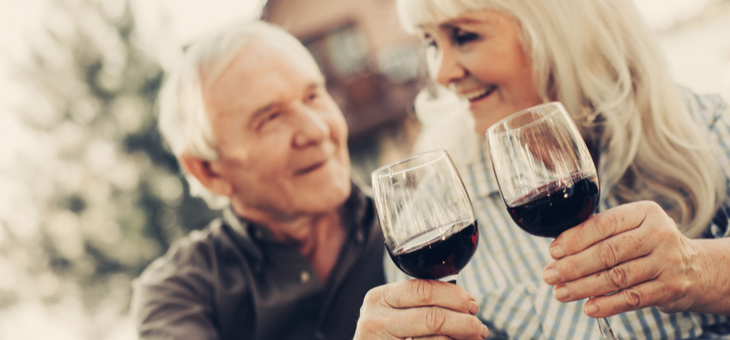Legal, plentiful and easy to access, alcohol remains the main drug of concern in Australia, but most of us have no idea of the harm it does.
A new report from the Australian Institute of Health and Welfare (AIHW) reminds us of the impact of booze.
“Alcohol was the principal drug of concern in 36 per cent of treatment episodes. It was the main or an additional drug of concern in 48 per cent of cases,” said AIHW spokesperson Dr Gabrielle Phillips.
The report, Alcohol and other drug treatment services in Australia 2018–19, confirms that alcohol is “the most common drug of concern for clients of publicly funded specialist alcohol and other drug treatment services”.
But polling from the Foundation for Alcohol Research and Education (FARE) revealed that most Australians don’t understand what constitutes risky drinking and consume well beyond recommended levels.
FARE’s 2019 Annual Alcohol Poll found only 31 per cent of people could correctly identify the number of standard drinks a person could consume to minimise long-term harm.
The poll found 79 per cent of Australians who regularly consumed six to 10 standard drinks considered themselves responsible drinkers, as did 64 per cent of Australians who drink to get drunk at least twice a week.
FARE chief executive Michael Thorn told the ABC “Australia has a problem with alcohol”.
“Since 2011, there’s been an overall increase in the proportion of Australian drinkers who drink to get drunk from 35 to 47 per cent,” he said.
“These are very concerning figures and show a significant increase from the time we first asked this question in 2011.”
Mr Thorn said the use of terms such as “drink responsibly” and “drink in moderation” in marketing were obscuring the true extent of alcohol harm.
“An overwhelming majority of Australian drinkers consider themselves responsible drinkers, yet a high percentage of those drinkers consume alcohol to get drunk,” he said.
The poll found that 82 per cent of adults consume alcohol, 76 per cent consumed alcohol on two days or less per week and nearly a quarter of people drink on three or more days per week.
Australia’s National Guidelines for Alcohol Consumption recommend adults drink no more than two standard drinks per day, and no more than four standard drinks on a single occasion to reduce the risk of alcohol-related injury.
Mr Thorn said rates of alcohol-related harm had increased despite alcohol consumption remaining stable for 10 years.
“Irrespective of the minor trends upwards or downwards, the totality of the harm is very significant – (alcohol) has been estimated to cost Australia about $36 billion per year.”
FARE estimates 6000 lives are lost in Australia each year because of alcohol and more than 144,000 people are hospitalised.
“One in 22 Australians die from alcohol-related causes, yet the community remains in the dark about the range of life-threatening diseases that alcohol causes,” Mr Thorn said.
Only half of poll respondents knew of the link between alcohol use and heart disease, less than half were aware of the link between alcohol use and stroke and only 29 per cent knew of the association between alcohol and cancer.
FARE is critical of the lack of a national alcohol awareness campaign.
“Frankly, it’s disappointing that governments haven’t been acting in the way they should when alcohol causes so many problems and has such an impact on our health and welfare system.”
Anthony Shakeshaft, from the National Drug and Alcohol Research Centre (NDARC), told the ABC Australians were often surprised by the health risks associated with drinking.
“When people are made aware of the guidelines, they’re usually a bit shocked because (the levels) seem relatively low… and they probably do underestimate their level of risk,” Professor Shakeshaft said.
“People may have a tendency to think, ‘if I have half a bottle of wine every night, I’m probably OK’.
“But actually, that’s not what the evidence says. The evidence says if you drink that much, you’re clearly and significantly increasing you risk of harm.”
The AIHW also released a report Alcohol, tobacco and other drugs in Australia, analysing research into alcohol consumption during the COVID-19 pandemic, finding that while total spending on alcohol increased in March 2020, the pattern reversed in April 2020.
Australian National University research found that among Australians who drink alcohol 20 per cent drank more and 27 per cent drank less since the spread of COVID-19.
Women aged 35 to 44 reported the greatest increase, but men often drank less because their consumption was usually in pubs and clubs, closed during the pandemic.
Professor Nicholas Biddle, from the ANU, told the ABC that women with increased caring responsibilities, and men who had lost their jobs, had drunk more alcohol during the pandemic.
“One of the potential reasons for a person decreasing their level of alcohol consumption is the lack of social opportunities to do so, due to the impact of physical distancing measures and the temporary closure of pubs and other drinking establishments,” the ANU research found.
“A real policy challenge could be those whose alcohol consumption increased during the early stages of the spread of COVID-19 maintaining their new level of consumption as the next phase of the COVID-19 pandemic commences.”
To access free and confidential advice about alcohol and other drugs, phone the National Alcohol and Other Drug Hotline: 1800 250 015.
Are you concerned about your or a close friend’s alcohol consumption? Do you buy into the recommended limits or believe they are unrealistic?
If you enjoy our content, don’t keep it to yourself. Share our free eNews with your friends and encourage them to sign up.
Related articles:
https://www.yourlifechoices.com.au/health/news/alcohol-more-toxic-than-you-think
https://www.yourlifechoices.com.au/health/your-health/alcohol-taking-a-toll-on-aussies
https://www.yourlifechoices.com.au/health/your-health/alcohol-linked-to-cancer-risk

